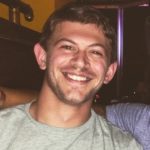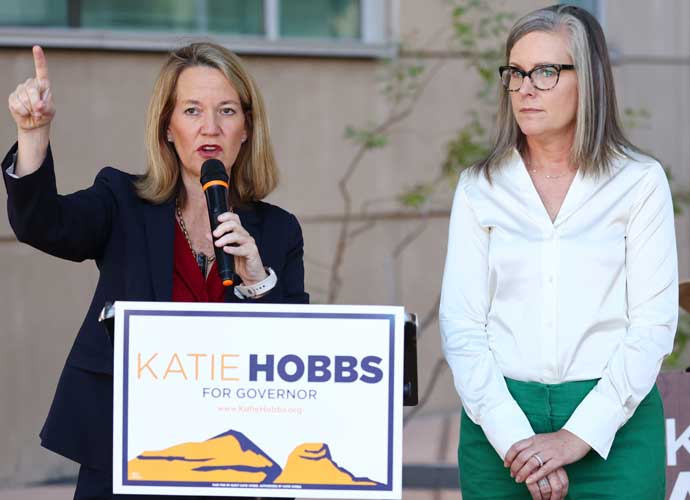Johnny Mundo & James Willems Discuss ‘Haus Of Pain’ & Wrestling [VIDEO EXCLUSIVE]
James Willems always wanted to be a professional wrestler. As a kid, Willems would watch wrestling giants thrash about in the ring, hoping one day to join them. At age 15, he built a ring in his backyard where he and his friends would film matches and try out moves.
As he got older, he let his dream recede into the background and he instead went to college and pursued a different career. Now, in his thirties, Willems has returned to ring along with his friend Lawrence Sonntag, to live out his lifelong dream once and for all. Willems recorded the journey for the new Rooster Teeth documentary Haus of Pain.
Willems and his trainer, professional wrestler Johnny Mundo sat down with uInterview to discuss the new film and all the training that went into it.
For the film, Willems only had a week to train for a tag-team match he’d fight with Lawrence. Mundo knew a week wasn’t to train Willems but the two of them worked together as hard as they could.
“When we first got into the ring, James, who has been a wrestling fan for his whole life, had a lot of really good instincts,” Mundo told uInterview exclusively. “And his expectations were relatively low too, which is cool. He came in humble and wanting to learn stuff.”
Willems wanted to learn all that he could, but ultimately, he’s thoughts were with the people who would come to see the match – he mostly just wanted to put on a good show for them.
“Johnny understood that we aren’t going to be the best wrestlers in the ring but if we can make sure that everything we do, every punch that we take, every punch that we give, or body slam that we give, if it all works towards the narrative of the match and the characters then it will be a good match,” Willems said. “[I] wanted it to be a good match, we didn’t want people to feel like they wasted their time coming to see it.”
But it wasn’t just about a good match. Willems got to live out his childhood dream and Mundo got to spend a week with another lifelong wrestling fan. The two fans chopped it up throughout the filming of the movie, in some cases, rediscovering the joy they derived from wrestling, to begin with.
“I felt like a kid again,” said Willems.
When speaking about trying out different moves that, while maybe a little advanced for Willems, were the most fun, Mundo said something that rings true to the entirety of Willem’s experience.
“If you don’t try it, you’re just going to be thinking about it the whole time. You just have to get it out of your system.”
Watch Willems achieve his lifelong dream in Haus of Pain available on Rooster Teeth.
Wrestling was the kind of thing I watched always growing up. It always existed. I watched it with my dad, actually. It was a weekly thing that I always did from about the time I was, as long as I can remember, until I was about 16, late into high school. I just always watched it, it was always my thing. I was there for the Monday night wars and everything. I was just kind of part of my life. So much so, that when I was 14, 15, my friends and I all got together and we built a ring in my backyard. We had our own backyard wrestling thing, we filmed it, we cut promos. There were only five of us so when one wasn't wrestling, they had to run over, grab the camera and film and do the color commentary. And then that guy would run out of our make-shift entry way, grab the camera. We kind of did this thing and for a long time I was like, 'Well, this is what I'm going to do, this is my passion, this is really what I want to do.' But just by nature of things, life started happening, and then I went off to college and there was no place to – I wrestled in high school but I went off to college and things just moved on from there and I got more into the production side of things and that's kind of where my life went. Then I found myself in my thirties going, 'Man, whatever happened to that dream?' Lucky enough I worked at a compony that said, 'Hey, remember that dream you had, what if we filmed you going back and trying to do it again when you're way to old to do it.' So that's where this all came about.
It's always really cool to work with someone that's a life long wrestling fan because right away, it means we are going to have a common bond. I didn't actually make a ring in my backyard but I grew up watching wrestling, too. Every Saturday and Sunday I'd watch it with my buddies and then we'd go out into somebody's front yard or back yard and try and put each other in 'Boston Crabs' and 'Camel Clutches'. So working with James and Lawrence was really cool for me. Especially thinking of where I am now, 15 years into this business, all the experience and knowledge that I've had it's cool to, especially in the context of a documentary, pass on that knowledge and chop it up about wrestling, psychology, stories, who said what, what wrestling is really like. This documentary was really fun for me to do.
Johnny - "When we first got into the ring, James, who has been a wrestling fan for his whole life, has a lot of really good instincts. And his expectations were relatively low too, which is cool. He came in humble and wanting to learn stuff. One of the hardest things about wrestling is learning, not only to master the physical moves, but how to layer it so that every move has intent. Not only that, but the moves and intent need to be aligned with your character and the story you're telling in the match. And that whole thing that I just explained has to become instinctual. And if it's not instinctual, you're not going to be in the moment when you are performing in front of people. Mastering that is a skill that could take a lifetime, I'm still working on it. So the challenge then is how can we get James and Lawrence as far down that path as possible in a week."
James- "My humble perspective is that Johnny understood that we aren't going to be the best wrestlers in the ring but if we can make sure that everything we do, every punch that we take, every punch that we give or body slam that we give, if it all works towards the narrative of the match and the characters then it will be a good match and I think that's what people wanted most. At least the participants, Lawrence and myself, wanted it to be a good match, we didn't want people to feel like they wasted their time coming to see it."
Johnny - "It wasn't that hard. For me, I was stoked when James and Lawrence showed up because they are both super cool dudes and we had a lot of common ground, I mean, James has been a wrestling fan his whole life and so have I. I think the hardest thing was the time frame. It's impossible to learn everything you need to know about a wrestling match in a week. Learning what the basic skills you need to know are and prioritizing things, in a way that you realize you may not even know half of what you need to know, or half of what you could know. But these basic things are what you need and figuring out how to prioritize and just set a day and say, 'Well, James has got a match on Saturday and that's in a couple of days so let's get moving.' I think that was the main challenge."
James- "I would say besides the time frame, there was a fun challenge of when you're in a room with another wrestling fan, you guys ultimately end up talking about wrestling and your favorite moments and your favorite moves and stuff like that. So there were several times when, even though we were under the clock, Johnny, Lawrence, and I would end up getting caught up talking about, 'Oh, remember the heart attack that the heart foundation used to do, lets try that, lets see."
Johnny - "That's right, we just started to try random tag moves."
James - "[Johnny] is like, well you guys are a tag team, you're going to need some tag moves, let's just do it. Lets move the crash bed in, go to the rope, it was kind of ... I felt like a kid again and that's what we used to do. We'd just say, 'We have this ring, lets just try everything, lets try it.' And it was a lot of fun, but it was also kind of a hurtle because you have to start with the basics and you have to get those basics down because you got a match on Saturday."
Johnny - "But it's more fun to jump off the top rope."
James - "Yeah, I don't know how important a four-fifty splash is going to be for my first match, but it was a great experience. Johnny is the first person to say, 'Oh, you should absolutely go to the top rope and try it.'
Johnny - "If you don't try it, you're just going to be thinking about it the whole time. Just get it out of your system."
RELATED ARTICLES
Get the most-revealing celebrity conversations with the uInterview podcast!



![Johnny Mundo & James Willems Discuss ‘Haus Of Pain’ & Wrestling [VIDEO EXCLUSIVE]](https://cdn-o9.uinterview.com/wp-content/uploads/2016/04/Johnny_Morrison.jpg)





Leave a comment